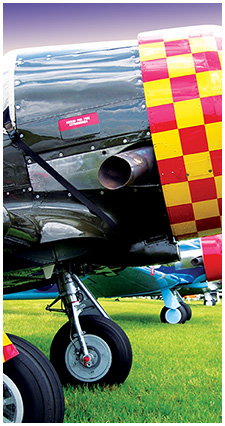History
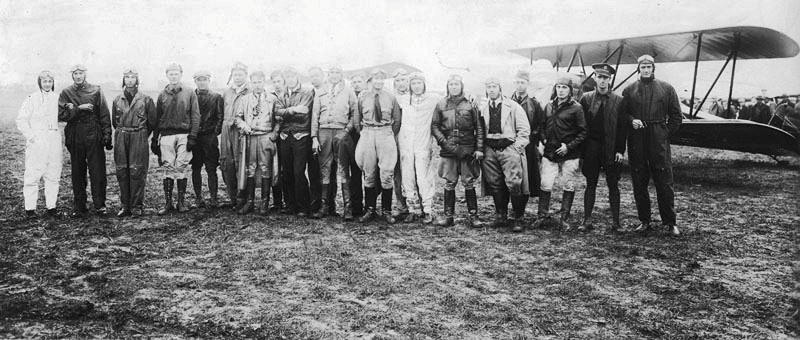
In August 1929 a newspaper reporter asked Clarksville Chamber of Commerce President Adolf Hach why the city should support an airport. In reply, Hach produced a Louisville & Nashville Railroad timetable. “Locate Clarksville promptly,” he told the reporter. After some searching through the schedule, Clarksville was finally located, printed in type no bigger than the railroad flag stops of Dudley Switch, Louise and Ladero.
“Now find Guthrie,” Hach continued. “It’s in big fat print! Why? Because Clarksville citizens were shortsighted a few years ago, and not finding any local support, the L&N placed the crossing point of its two main lines in Guthrie.”
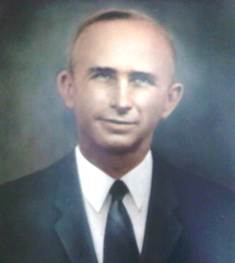
John Outlaw
Hach wanted to be sure that history would not repeat itself. His progressive attitude was shared by a number of people in Clarksville. Among them were Collier and Captain John Outlaw, the commanding officer of the lO5th Observation Squadron detachment at Clarksville. By the late summer of 1929, these men, along with other progressive citizens including Mayor W.D. Hudson, Howard Smith, Emmitt Ladd, and Joseph Boillan. Jr., formed the Clarksville Aviation Corporation. After hedgehopping across Montgomery County, they found their ideal Airport location, a 236-acre field six miles north of Clarksville near Highway 41 and the Tennessee Central Railroad Line. Selling $50 shares of company stock to the public was slow at first, but on September 29, 1929, they arranged to purchase the property from the J.C. Caroland family.
After minor tree cutting and grading, the field was scheduled to open on October 28th. By then it had the backing of citizens and businesses, including the Tennessee Central Railroad, which built a 40-foot-long station platform along the nearby tracks, designating it the Clarksville Airfield Station.
Despite a thick overcast and rain, 3,000 people showed up on opening day to see what might happen. With better weather on October 29th, crowds watched Army Air Corps pursuit aircraft perform, paid for airplane rides and witnessed a 16-year-old Hopkinsville, Kentucky, high school student volunteer and successfully make a parachute jump. The event was capped by the arrival of a 200-foot-Iong dirigible from Scott Field in Illinois. Clarksville Leaf-Chronicle newspaper reports said the airship “Swooped down over the city. The craft was brought low and Captain Kepner shouted questions as to the location of the field. Spectators pointed toward the new port and automobiles streaked, in an unbroken line, to witness the craft land.”
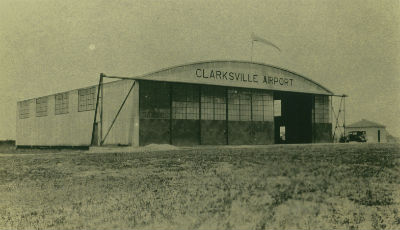
Airport Hangar Circa 1930
A formal opening of the airfield was held June 17-18, 1930. Five thousand people attended the dedication of a new hangar and other facilities. Interstate Airlines displayed aircraft from Sky Harbor Airport near Nashville. Standard Oil Company of Louisiana arrived in a huge amphibian, and Shell Petroleum of St. Louis flew dignitaries around in a Lockheed Vega. There was a glider demonstration by Paul Flannery of the Middle Tennessee Glider Association in Nashville, and a local couple was married in an airplane flying above the field.
On November 29, 1931, the National Guard honored Clarksville and the work of Captain Outlaw by christening a new Douglas 0-38 observation plane The City of Clarksville. Only two other such planes were named after Tennessee cities. The Esso Oil Company constructed the first hangar at the airport in 1932. The Company provided fuel, mechanical services and aircraft storage. A year later, Joe Winkle was hired as the first full-time manager of the field. Local pilots who were based and flew regularly from Clarksville in the 1930′ s included Clyde Brown, Patrick Cross, Howell Gholson, Mode Hampton, Pat Howell, Kenneth Grizzard, Bowman Meriwether, John Outlaw and Marion “Doc” Sadler. After several years of growing pains, the Clarksville Airport was fully established and smoothly operating. On December 1, 1937, the Clarksville Aviation Corporation was dissolved and the airport deeded to Montgomery County for $525,000, the exact sum the corporation had risen to capitalize the airfield eight years earlier.
From the 1940’s forward
Military pilot training was the principle activity at the Clarksville Airport during the early 1940′s. Airport Manager Frank Knapp operated a flight school that supervised the training of hundreds of pilots in the Civilian Pilot Training Program (CPTP) and the War Training Service (WTS). Austin Peay State College (now University) provided housing and classrooms for U.S. Navy Cadets when the WTS began in 1941.
In 1943 the City of Clarksville paid tribute to a native son who was partly responsible for the airport’s existence. Colonel John F. Outlaw of the 105th Observation Squadron had been killed by a lightning strike the year before. Outlaw helped organize the Clarksville Aviation Corporation which sold stock to finance construction of the airfield in 1929. During a memorial service on October 18, 1943, Clarksville Airport was named Outlaw Field. The dedication ceremonies were highlighted by a formation flight of B-17′s from Dyersburg Army Base. Fighter aircraft from Smyrna and Camp Campbell Army Air Fields escorted the bombers.
Following the war Outlaw Field underwent several significant changes. In 1947 the northeast-southwest runway was paved, lighted and extended to 4,100 feet. Construction of a terminal building was completed in 1951.
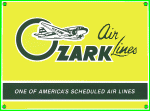 By the mid 1950s, Ozark Airlines was providing daily scheduled passenger service to Clarksville. Ozark initially flew OC-3s and progressed to Fairchild F-27 twin-turboprops by the late 1970s. Southeast Airlines served Clarksville in the late 1950s but discontinued service by 1960. A year later the route was awarded to Southern Airways. It was during this period that runway 17-35 was constructed. It has since been extended to 6,000 feet to become the primary runway with three instrument approaches.
By the mid 1950s, Ozark Airlines was providing daily scheduled passenger service to Clarksville. Ozark initially flew OC-3s and progressed to Fairchild F-27 twin-turboprops by the late 1970s. Southeast Airlines served Clarksville in the late 1950s but discontinued service by 1960. A year later the route was awarded to Southern Airways. It was during this period that runway 17-35 was constructed. It has since been extended to 6,000 feet to become the primary runway with three instrument approaches.
In 1957 the City of Clarksville and Montgomery County became joint owners of the airport, which led to the formation of the Clarksville Airport Joint Committee as the airport’s management agency. The purchase of additional property and the construction of taxiways, “T” hangers, and maintenance hangars marked the airport’s growth in the 1960s and 1970s. For a short time in the 1970s, Aerie Airlines, a Tennessee intrastate air carrier, was headquartered at Outlaw Field.
Since the late 1960s, fixed base operations at the airport have included Clarksville Flying Service and Clarksville Aviation. As of 2023, Clarksville Regional Jet Center partners with Titan Aviation Fuels as the exclusive fuel provider on-site. On-site maintenance, T&T Aviation, is located on the airfield for immediate care and maintenance of based and visiting aircraft.

